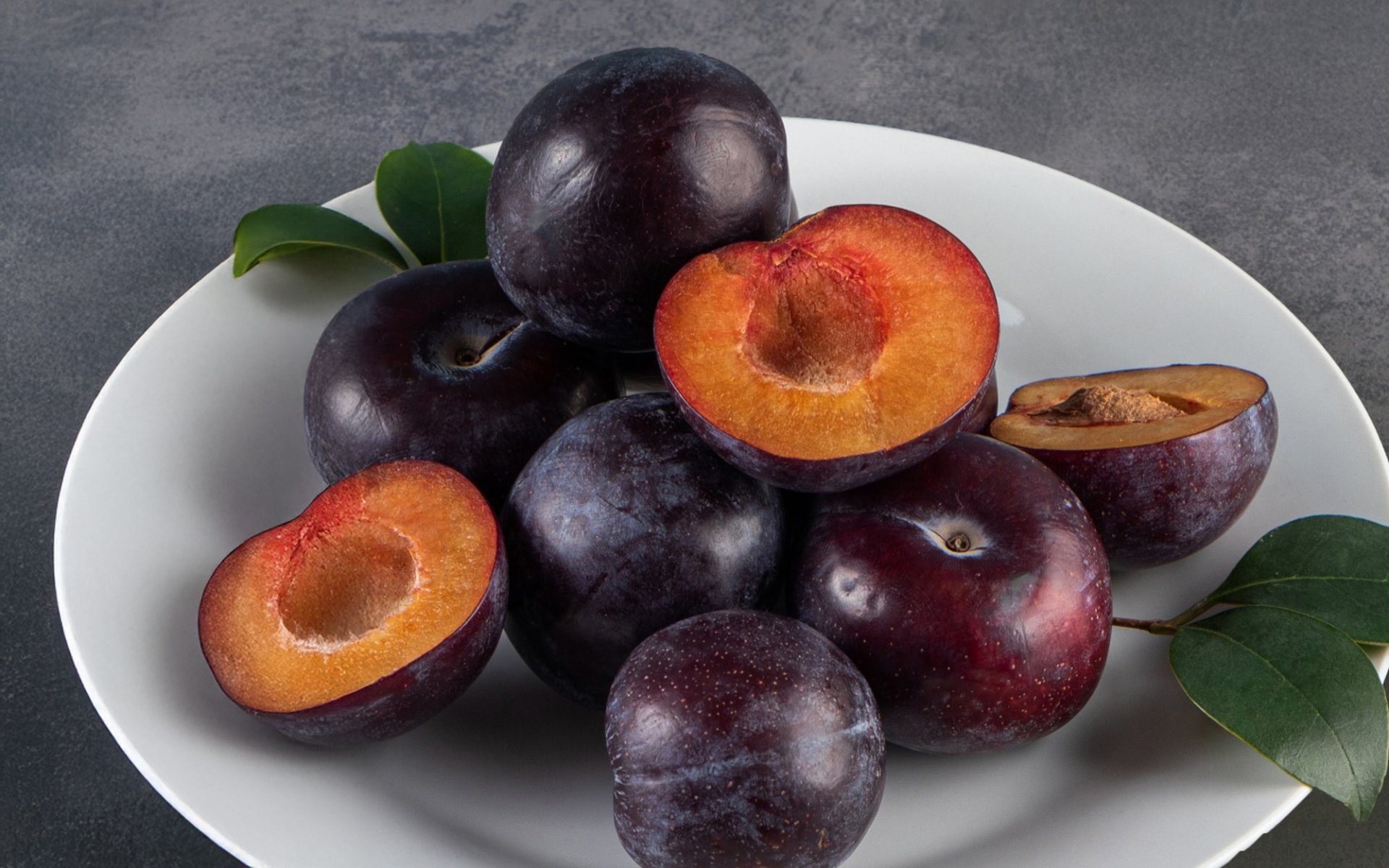Prunes, Plums, and Luk Na

Luk Nai, a curiously named fruit in Thai, is actually a plum. The name "plum" is a direct transliteration from English. As for "Luk Nai," it's truly the name used by the Chinese for the fresh, edible fruit. This is because plums come in two types: dried and fresh. So, the fresh version can be called "Luk Nai" or "plum," while the dried version is referred to as a prune.
Plum and Black Plum: A Cold-Weather Fruit from India
Plum is a cold-weather fruit with thin skin and yellow flesh, belonging to the same genus as peaches and cherries. It comes in various varieties, including European plum, Damson plum, Mirabelle plum, black plum, and cherry plum. However, the plum most commonly known to Thais is the Black Plum or "Luk Nai," which originated in India and has the scientific name Syzygium cumini.
Black Plum has a long history and cultural significance in many regions of the world, having been used in traditional medicine, cuisine, and religious ceremonies for centuries.
The black plum tree originated in the Western Ghats mountains and was first cultivated in India before being introduced to other regions of the world, including Southeast Asia, South America, and Africa, during the colonial era. Today, it is widely found in India, Bangladesh, Sri Lanka, and Nepal.
Nutritional Benefits and Cultural Role of Black Plum
In India, black plum is an important part of Ayurvedic traditional medicine, an ancient Indian medical system. It is recommended for treating various ailments, as it is believed to have anti-diabetic, antimicrobial, and anti-inflammatory properties. In addition to the widely consumed fruit, the leaves, bark, and seeds of the black plum tree are also used in traditional medicine to treat various health problems.
Furthermore, black plum has been a key ingredient in Indian cuisine for centuries. Indians often use it to make jams, jellies, chutneys, and beverages. With its unique tangy-sweet flavor, black plum is very popular in Indian cuisine and is used in a wide variety of dishes, both savory and sweet.
Black plum is a highly nutritious fruit, rich in Vitamin C, Vitamin K, copper, fiber, potassium, calcium, phosphorus, magnesium, and zinc. It is a low-fat and low-calorie fruit. Additionally, the neochlorogenic and chlorogenic acids in black plums act as antioxidants, helping to prevent cell damage from free radicals. Importantly, it also has a mild laxative effect.
Prunes: A Fiber Powerhouse and Health Benefits
As for dried plums or prunes, which many people consume as a weight-loss food, they are equally beneficial. They help reduce fatigue because prunes contain 1/3 sugar. Moreover, prunes are high in minerals and dietary fiber, which are excellent for digestion and can help prevent colon cancer because one prune contains as much as 1 gram of fiber. Even though prunes are sweet, they have a low glycemic index, making them suitable for diabetics. Additionally, prunes can also help nourish the brain and improve memory.
You can find Black Plums at all Rimping branches.


